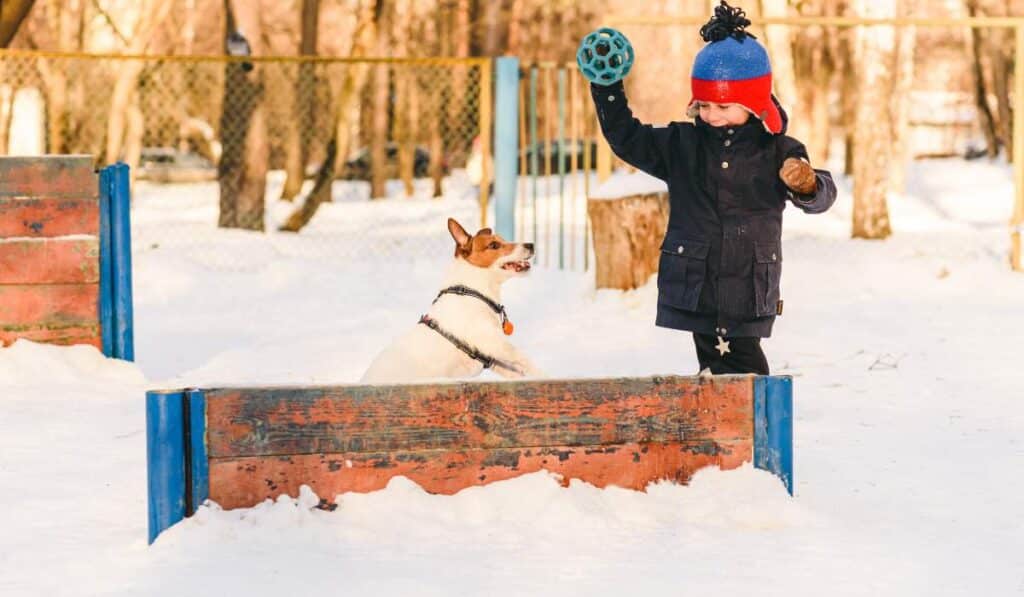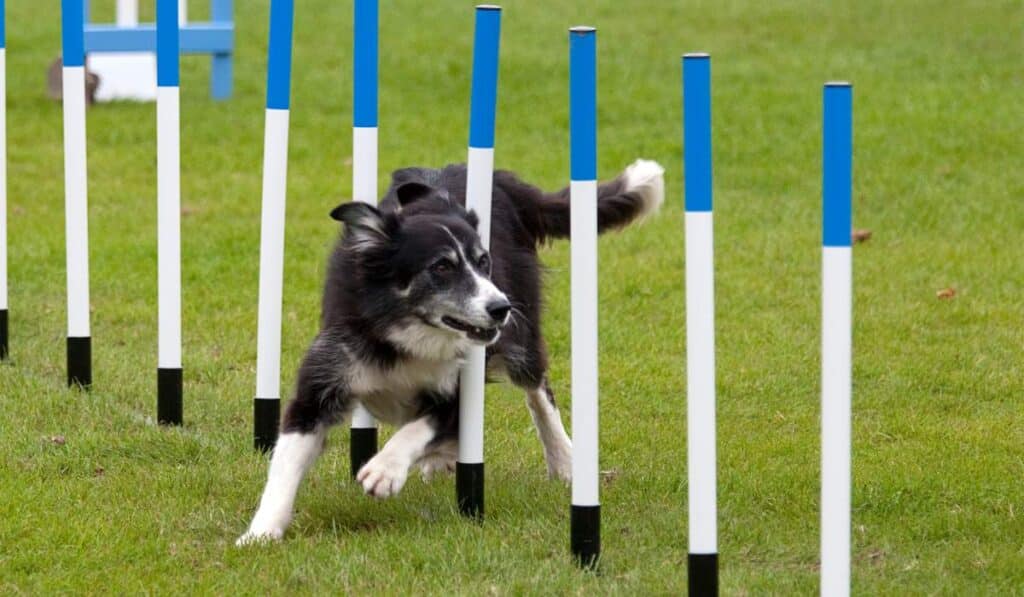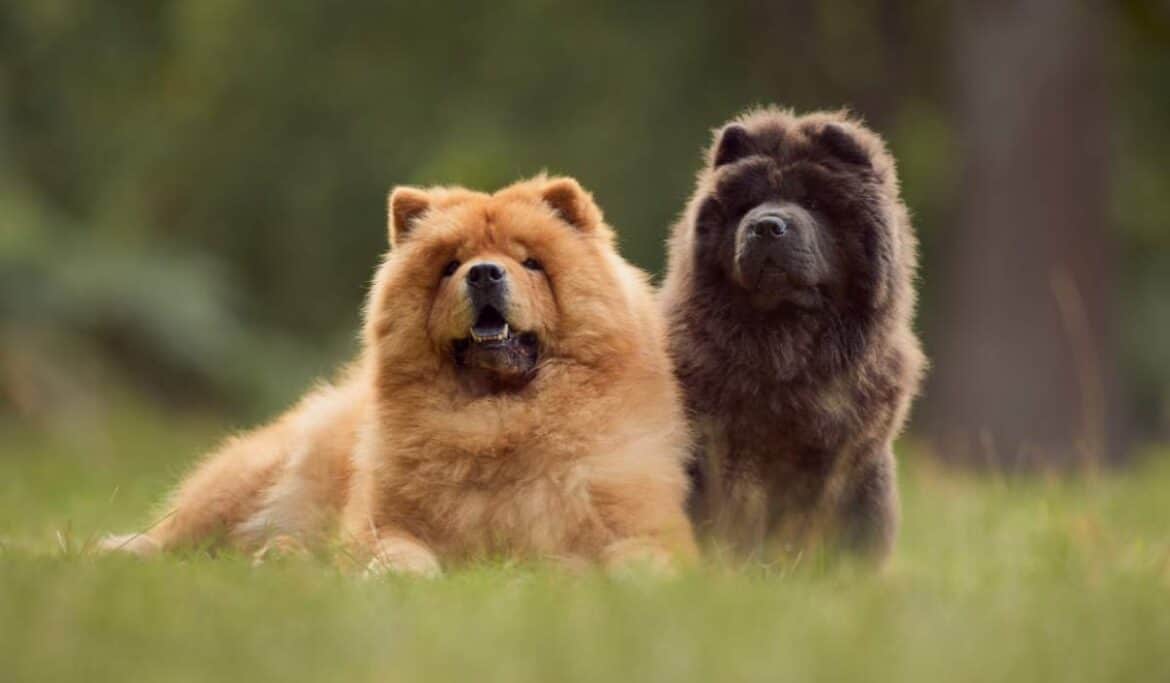Are you tired of constantly struggling with your dog's leash during walks? Leash training can be a frustrating experience for both dogs and their owners. However, there is an alternative approach that has gained popularity in recent years: off-leash training.
Off-leash training involves teaching dogs to behave well without the need for a leash or physical restraint. This technique has been around for centuries, with ancient societies using it to train hunting dogs. Today, many dog trainers use off-leash training as an advanced method of behavior modification.
Off-leash training sessions involve clicker training, positive reinforcement, and the use of treats and toys as rewards. It taps into a dog's natural instincts and allows them to explore its surroundings freely within a fenced area while still obeying commands from its owner.
We will also explore the signs of successful off-leash behavior and why it is essential to consider this type of advanced training for your furry friend.
Table of Contents
Benefits of Off-Leash Training for Dogs and Their Owners

Improved Physical Health for Dogs and Owners
Off-leash training is a great way to improve the physical health of both dogs and their owners. When dogs are off-leash, they have more freedom to run around and explore their surroundings. This increased level of exercise can help improve their cardiovascular health, increase muscle strength, and reduce the risk of obesity.
Owners who engage in off-leash training with their dogs also benefit from increased physical activity. Walking or running alongside your dog can provide a great workout for both parties involved, leading to improved overall fitness levels.
Increased Mental Stimulation for Dogs
Dogs thrive on mental stimulation, and off-leash training provides ample opportunities for this type of engagement. When dogs are allowed to explore new environments without being constrained by a leash, they are able to use all of their senses to take in new sights, smells, and sounds.
Off-leash training often involves reward-based systems that encourage dogs to learn new commands and tricks. This type of mental stimulation can help prevent boredom and keep dogs mentally sharp as they age.
Strengthened Bond Between Dog and Owner
Off-leash training can also help strengthen the bond between dog and owner. By spending time together in a new environment while engaging in activities such as playing fetch or practicing obedience commands, owners are able to build trust with their pets.
Reward-based systems such as using treats or verbal praise when dogs perform desired behaviors during off-leash training sessions can also help reinforce positive associations between dog and owner.
Preparing Your Dog for Off-Leash Training
Off-leash training can be a great way to give your dog more freedom and exercise, but it requires preparation and practice. Before you start off-leash training, there are some things you need to consider.
Basic obedience skills required
Before you begin off-leash training, ensure that your dog has basic obedience skills like sitting, staying, coming when called, and walking on a leash. These skills will help keep your dog safe when they are off-leash.
If your dog doesn't have these basic obedience skills yet, start with leash work to teach them. Use a harness or collar that fits properly and is comfortable for your dog. A head collar or attachment harness can also be helpful in teaching leash walking.
Socialization with other dogs and people
Socialization is an essential part of preparing your dog for off-leash training. It helps them learn how to interact appropriately with other dogs and people.
Take your dog to places where they can meet other dogs and people safely. Start with short introductions and gradually increase the time spent socializing as they become more comfortable.
Gradual introduction to off-leash environments
When introducing your dog to off-leash environments, start in a controlled area like a fenced backyard or an enclosed park. This will allow them to get used to being off-leash without any distractions.
As they become more comfortable in this environment, gradually introduce distractions like other dogs playing nearby or squirrels running around. Practice calling them back using cues or lures while reinforcing positive behavior with treats or playtime.
Practice makes perfect
Off-leash training requires consistent practice over time. Start with short sessions of 5-10 minutes every day and gradually increase the duration as your dog becomes more confident.
Make sure you are always supervising your dog during off-leash training sessions. This will help prevent any accidents from occurring while reinforcing positive behavior.
Distractions and reinforcement
Distractions are a part of off-leash training. Your dog will encounter many distractions, including other dogs, people, and animals like squirrels. It's important to reinforce positive behavior using treats or playtime when your dog responds appropriately to cues or lures.
Avoid punishing your dog for not responding correctly. Instead, use positive reinforcement to encourage the desired behavior.
Exercise and play
Off-leash training provides an excellent opportunity for exercise and playtime with your dog. Incorporate games like fetch or hide-and-seek into your training sessions to make them more enjoyable for both you and your furry friend.
Remember to keep things fun and engaging for your dog during off-leash training. This will help them learn faster while strengthening the bond between you two.
Common Challenges in Off-Leash Training and How to Overcome Them

Off-leash training can be a great way to give your dog more freedom and exercise while also strengthening your bond with them. However, it's not always an easy process. There are several common challenges that you may encounter during leash-less training for dogs.
Distractions during Training
One of the biggest challenges. Dogs are naturally curious animals, and they can easily get sidetracked by new sights, sounds, and smells. This can make it difficult for them to focus on their training.
To overcome this challenge, start by finding a quiet area where there are minimal distractions. Once your dog has mastered their commands in this environment, gradually increase the level of distraction by introducing new elements one at a time.
Another strategy is to use positive reinforcement techniques such as treats or toys as a reward for good behavior during training sessions. This will help keep your dog focused on the task at hand.
Fear or Anxiety in New Environments
Another common challenge. Dogs can become nervous or scared when they're introduced to unfamiliar surroundings, which can make it difficult for them to follow commands.
To overcome this challenge, try introducing your dog slowly to new environments. Start with short visits and gradually increase the amount of time spent in each location. Use positive reinforcement techniques such as treats or praise when your dog shows good behavior in these new environments.
It's also important to pay attention to your dog's body language during these training sessions. If you notice signs of fear or anxiety such as trembling or hiding behind objects, take a step back and try again later.
Lack of Recall Response
Finally, another common challenge. This means that your dog may not come back to you when called, which can be dangerous if they're off-leash in an unsecured area.
To overcome this challenge, start by practicing recall commands in a secure area such as your backyard. Use positive reinforcement techniques such as treats or praise when your dog responds correctly to the command.
Once your dog has mastered their recall commands in a secure environment, gradually increase the level of distraction by introducing new elements one at a time. For example, practice recalling commands with other people or dogs around.
Essential Commands for Off-Leash Dogs
Leash laws are enforced in many areas, but there are some places where dogs can roam free. In those cases, it is essential to have a well-trained dog that responds to commands and stays under control. Here are some essential commands for off-leash dogs that every owner should know.
Recall Command
The recall command is perhaps the most important command for off-leash dogs. It allows you to call your dog back to you when they are wandering too far away or getting into trouble. To train your dog on the recall command, follow these steps:
- Choose a word or phrase that you will use consistently as the recall command.
- Start training in a quiet area with few distractions.
- Call your dog's name followed by the recall command and reward them when they come to you.
- Gradually increase the distance between you and your dog as they become more reliable.
- Practice in different environments with increasing levels of distraction.
Sit, Stay, and Down Commands
The sit, stay, and down commands are also important for off-leash dogs. They allow you to keep your dog under control while interacting with other people or animals or during an emergency situation.
To train your dog on these commands:
- Choose a consistent hand signal or verbal cue for each command.
- Start training in a quiet area with few distractions.
- Use treats or positive reinforcement to encourage your dog to perform each command correctly.
- Gradually increase the duration of each command until your dog can hold it for several minutes at a time.
- Practice in different environments with increasing levels of distraction.
Leave It Command
The leave it command is useful if your off-leash dog encounters something dangerous or inappropriate while exploring their surroundings.
To train your dog on this command:
- Hold a treat in one hand and close it into a fist.
- Show your dog the closed fist and say "Leave it."
- Wait for your dog to stop trying to get the treat and reward them with a different treat.
- Gradually increase the difficulty by using more tempting items or adding distractions.
Emergency Recall Command
In addition to the recall command, it is important to have an emergency recall command that you can use in dangerous situations.
To train your dog on this command:
- Choose a word or phrase that you will only use in emergency situations.
- Practice calling your dog using this command in different environments and scenarios.
- Reward your dog heavily when they respond quickly and reliably.
Call for Control
If your off-leash dog starts to become too excited or out of control, it is important to have a way to call them back and regain control of the situation.
To train your dog on this command:
- Choose a consistent word or phrase that you will use as a call for control.
- Use positive reinforcement techniques to encourage your dog to come back when they hear this command.
- Practice in different environments with increasing levels of distraction.
Tips for Reliably Training Your Dog to Be Off-Leash

Positive Reinforcement Techniques
Positive reinforcement techniques are the most effective way to train your dog to be off-leash. Dogs respond well to rewards and praise, so it's essential to use them during training. You should reward your dog every time they obey a command or come when called. Treats, toys, and verbal praise are all excellent ways to reinforce good behavior.
Consistency in Training Routines
Consistency is key. It's essential to establish a regular routine and stick to it. Dogs thrive on structure and predictability, so make sure you set aside time each day for training sessions. Consistent training will help your dog learn faster and retain information better.
Gradually Increase Distance from the Dog
When starting leash-less training with your dog, it's best to start in an enclosed area like a backyard or park with a fence. Once your dog becomes comfortable with being off-leash in this environment, gradually increase the distance between you and your dog. Start by walking a few feet away from them and calling them back using a reliable recall command like "come." As your dog becomes more confident, gradually increase the distance between you until they can be off-leash without running away.
Reliable Recall Command
A reliable recall command is crucial when teaching your dog leash-less training skills. The recall command should be short, simple, and consistent so that your dog learns what you expect of them quickly. Use positive reinforcement techniques such as treats or toys when they respond correctly.
Practice Makes Perfect
Practice makes perfect. The more opportunities you give your dog to practice their skills off-leash, the better they will become at following commands reliably. Take advantage of every opportunity you have to practice with your pup - whether it's during walks, at the park, or in your backyard.
Be Patient
Training your dog to be off-leash takes time and patience. It's essential to remain calm and patient during training sessions, even if your dog doesn't respond as quickly as you'd like. Remember that every dog learns at their own pace, and some may take longer than others to master leash-less training skills.
Considerations for Safe and Responsible Off-Leash Training
Legal Requirements in Public Spaces
As a responsible dog owner, it's important to be aware of the legal requirements. In most public spaces, dogs are required to be on a leash at all times. However, there may be designated off-leash areas where dogs can run free. It's important to research your local laws and regulations to ensure you're not breaking any rules.
Safety Equipment Necessary
Off-leash training can pose risks to both your dog and other people or animals in the area. Therefore, safety equipment is necessary to ensure everyone's well-being. Some essential safety equipment includes:
- A well-fitted collar or harness
- Identification tags with up-to-date contact information
- A sturdy leash for emergency situations
- High-visibility clothing or accessories for you and your dog
It's recommended that you bring along water and treats for your dog during off-leash training sessions.
Awareness of Potential Hazards
Even with proper safety equipment and precautions in place, there are potential hazards that come with off-leash training. It's important to be aware of these risks so that you can take steps to prevent them from happening. Some common hazards include:
- Other dogs in the area who may not get along with your dog
- Wildlife such as snakes or coyotes that could pose a danger to your dog
- Busy roads or bodies of water where your dog could get hurt or lost
To minimize these risks, consider finding a safe and secure location for off-leash training sessions. If possible, choose an area that is fenced-in and away from busy roads or wildlife habitats.
The Importance of Proper Off-Leash Training for Happy Dogs and Owners

Reduced Stress on Both Dog and Owner
Off-leash training can help reduce stress for both dogs and their owners. When a dog is properly trained to walk off-leash, they are less likely to pull or become agitated when they see other dogs or people. This reduces the stress on the owner who no longer has to worry about controlling their dog's behavior on a leash.
When a dog is allowed more freedom to explore their surroundings, they are less likely to become bored or frustrated. This can lead to a happier, more relaxed dog.
Enhanced Freedom and Enjoyment
One of the biggest benefits of off-leash training is the enhanced freedom it provides for dogs. Dogs are naturally curious creatures who love to explore their world. When they are confined by a leash, they miss out on many opportunities for adventure and fun.
Off-leash training allows dogs to roam freely, sniffing out new scents and exploring new places. This can be incredibly enriching for them and lead to a happier, more fulfilled life.
Moreover, off-leash training can enhance the enjoyment that both dogs and owners experience during walks. Without the constraints of a leash, both parties can enjoy each other's company without feeling restricted.
Improved Behavior in Social Situations
Dogs that have been properly trained off-leash are often better behaved in social situations than those that have not received this type of training.
When a dog is allowed off-leash in an open space like a park or beach, it may encounter other dogs or people. A well-trained dog will be able to navigate these situations without becoming overly excited or aggressive.
This type of training also helps improve a dog's recall ability - meaning they will come back when called by their owner even if there are distractions around them.
The Need for Attention and Fun
Dogs need attention and fun in their lives, just like humans do. Off-leash training can provide both of these things.
When a dog is allowed off-leash, they are able to interact more freely with their environment. This can be incredibly stimulating for them and lead to a happier, more fulfilled life.
Moreover, off-leash training allows owners to engage in playtime with their dogs without the constraints of a leash. This can be incredibly bonding for both parties and lead to a stronger relationship between dog and owner.
The Danger and Risk
It's important to note that off-leash training should only be attempted in safe environments. Dogs that are not properly trained may run into danger or cause harm to themselves or others.
Owners should also be aware of any local laws or regulations regarding off-leash dogs. It's important to follow these rules in order to ensure the safety of everyone involved.
Conclusion: The Benefits of Leash-Less Training for Dogs
Leash-less training for dogs is a great way to improve the bond between you and your furry friend. By allowing your dog to roam free, you can increase their confidence, independence, and overall happiness. However, it's important to remember that leash-less training requires patience and consistency.
To ensure success in leash-less training for your dog, be sure to prepare them properly by starting with basic commands and gradually increasing the difficulty level. It's important to understand the common challenges associated with this type of training and how to overcome them.
By following these tips and guidelines for safe and responsible off-leash training, you'll be able to enjoy a happy life with your beloved pet.
Frequently Ask Questions (FAQs)
Is leash-less training suitable for all dogs?
No, not all dogs are suitable candidates for leash-less training. It's important to consider factors such as breed, age, temperament, and health before attempting this type of training.
How do I prepare my dog for leash-less training?
Start by teaching basic commands such as "come," "stay," and "heel" on a leash. Gradually increase the distance between you and your dog while practicing these commands until they can perform them reliably without a leash.
What are some common challenges in leash-less training?
Common challenges include distractions from other animals or people, lack of recall response from the dog, and fear or anxiety in new environments or situations.
What essential commands should my off-leash trained dog know?
Essential commands include recall (come), stay (stop where they are), heel (walk beside me), leave it (ignore something), and drop it (release what they have).
How can I ensure reliable off-leash behavior from my dog?
Consistency is key. Practice regularly in different environments, use positive reinforcement and rewards, and always supervise your dog's behavior.


